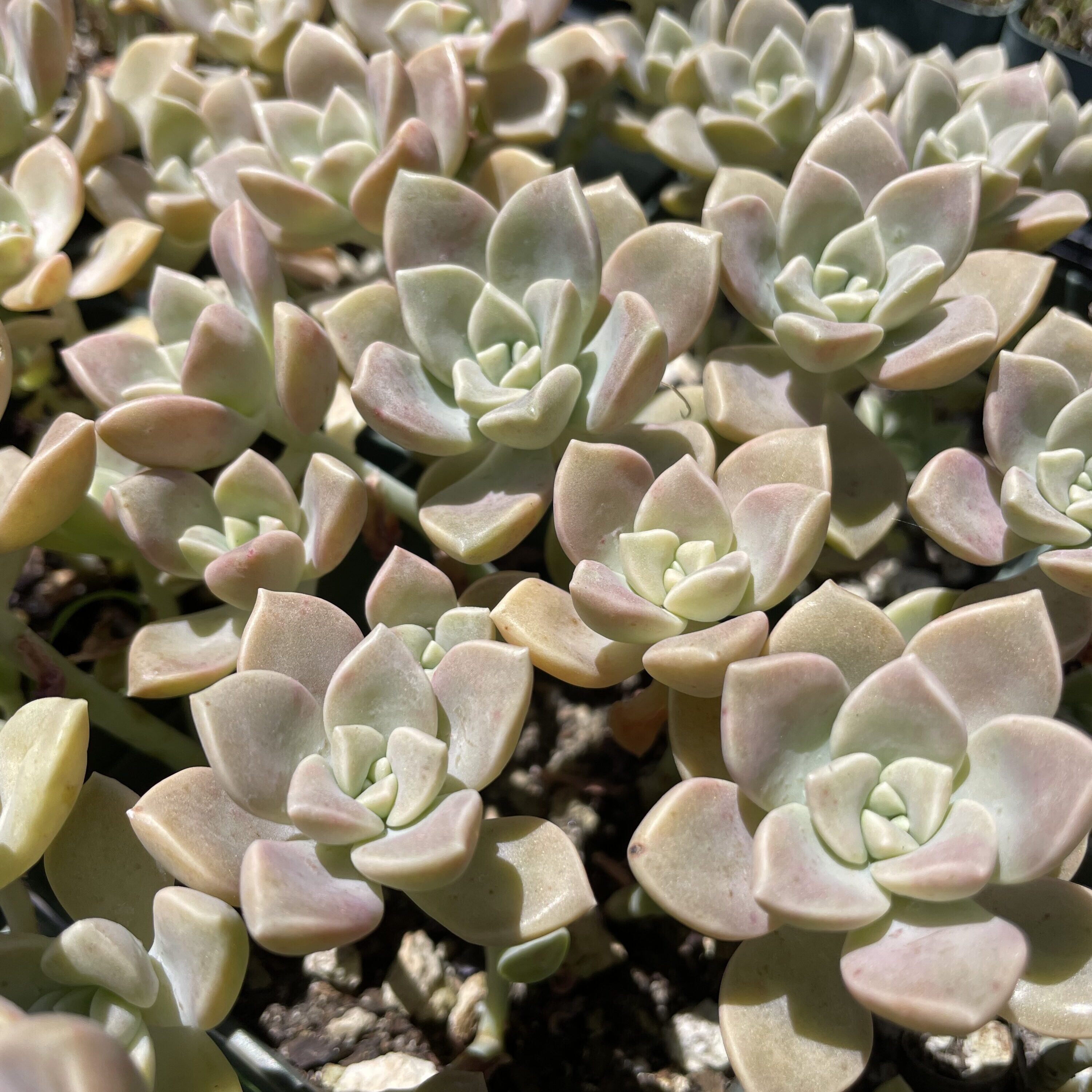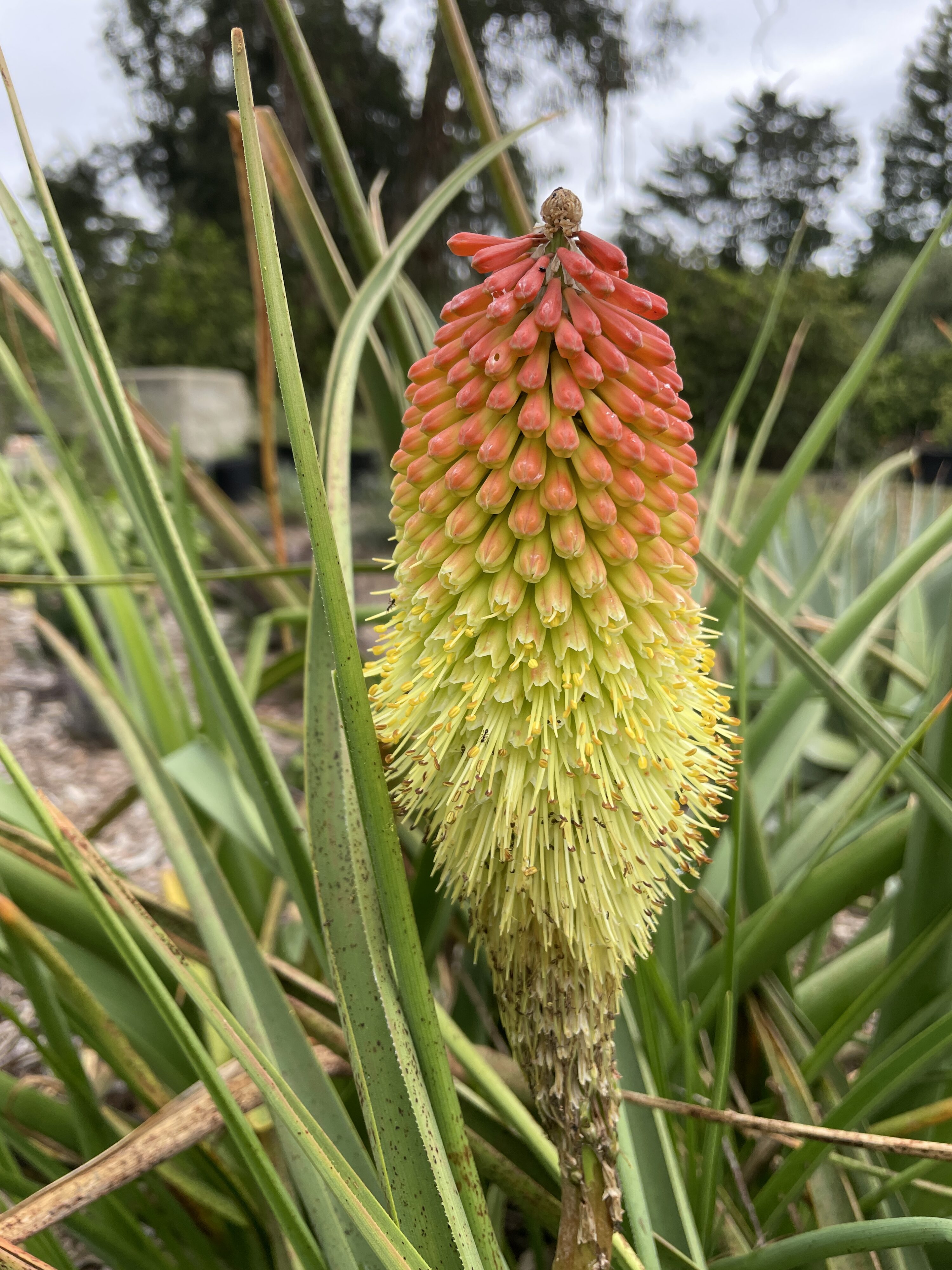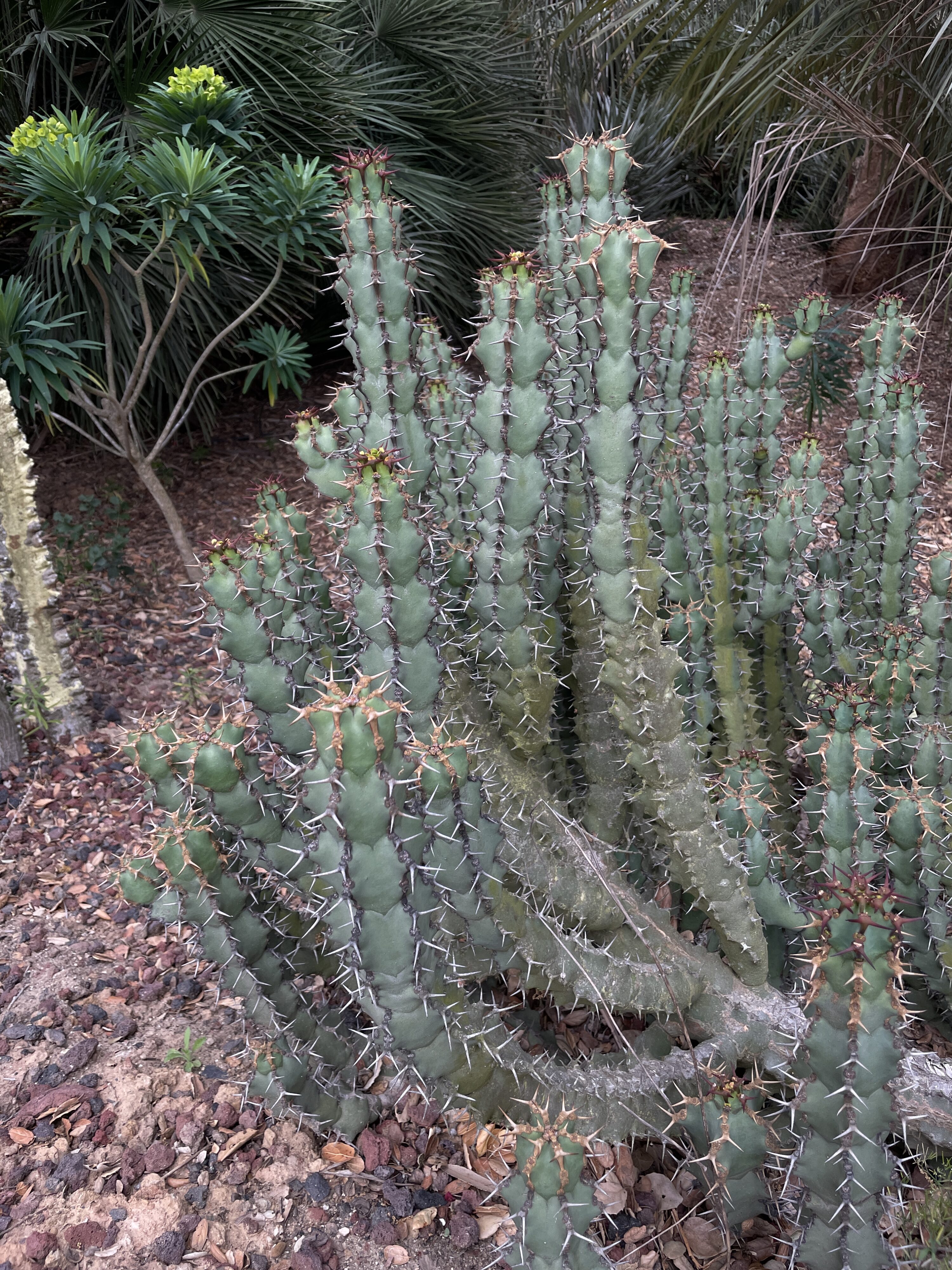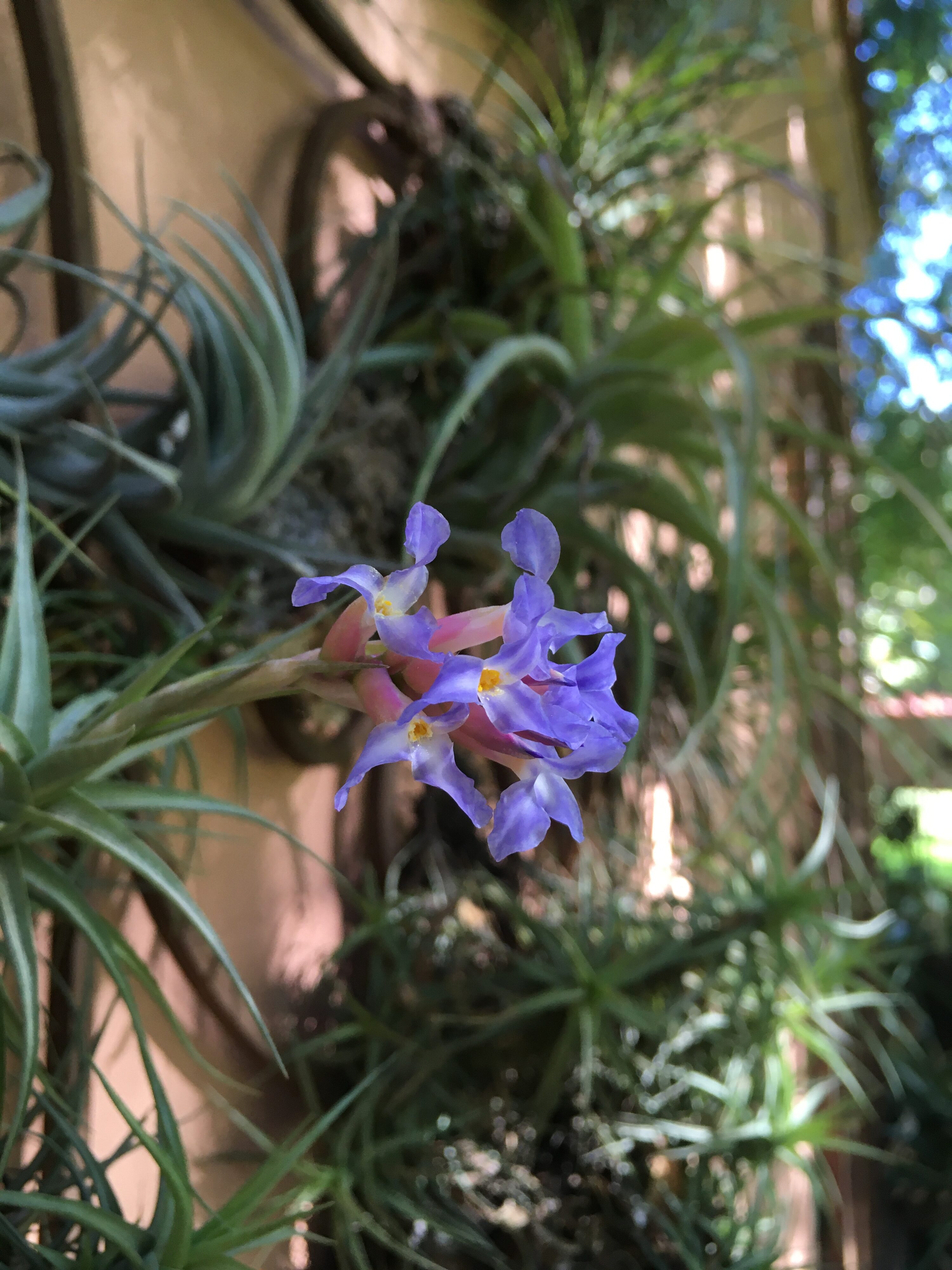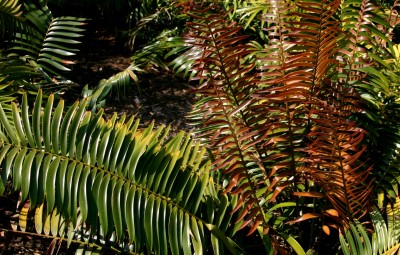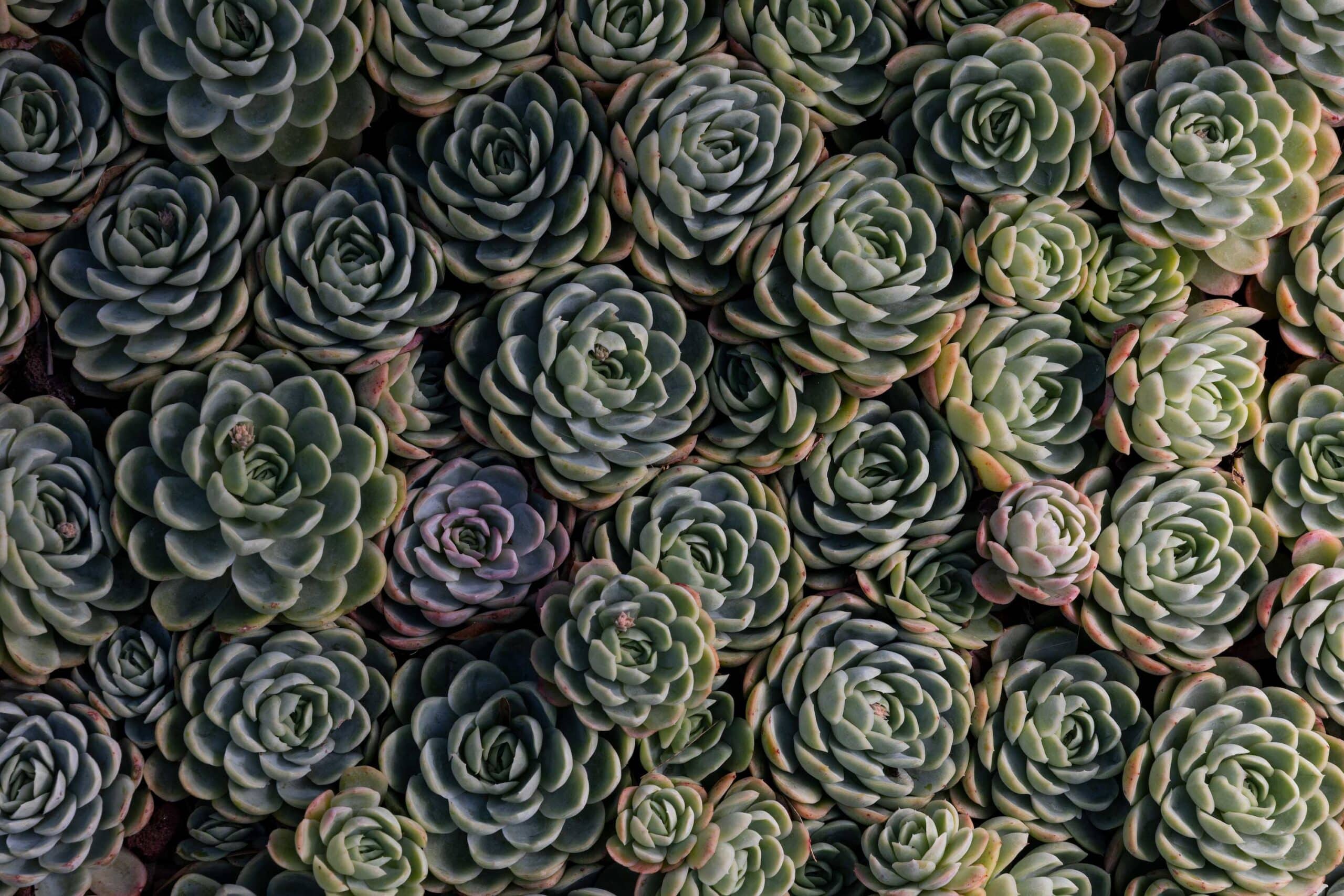
Plant Highlights
May
-
Graptopetalum paraguayense ssp. bernalense
Highlight Month:
May
Nativity:
This diminutive succulent is known from only one location and was first introduced to the botanical field in 1979 by Alfred Lau (1928-2007), a German plant collector and missionary living in Mexico. Lau found the plant at 700-800m on Cerro del Bernal, a solitary mountain peak located 39 km east of Ciudad Mante, Tamaulipas, Mexico. It was observed growing in both rock fissures and on flat ground amongst Sedum, Echeveria, Tillandsia, Ficus, and several orchid species.
Growth Habit:
The one other subspecies, G. paraguayense ssp. paraguayense, has only ever been observed in cultivation when volunteer seedings appeared in the New York greenhouse of Frank Weinberg in 1904, likely traveling as seed amongst cacti imported from Mexico. After much taxonomic and nomenclatural confusion, it retains the specific epithet, paraguayense, despite its likely origins in Mexico, not Paraguay.
G. paraguayense ssp. bernalense differs by having a smaller overall size and yellowish to whitish green leaf coloration versus the larger rosette and greyish violet color of ssp. paraguayense.
Growing Requirements:
Sun, well-drained soils
Features:
The genus Graptopetalum comes from the Greek grapto, “to write,” and petalum, “a petal,” referencing the marked or inscribed petals often colored with red in some of the species. Graptopetalum flowers face upwards and spread out like tiny stars. There are approximately sixteen Graptopetalum species recognized with the majority occurring in Mexico and two into Arizona. As of 2012, botanical researchers in Russia have suggested elevating G. paraguayense ssp. bernalense into its own species, G. bernalense.
Where at Lotusland:
Lotusland is home to both subspecies in the “echeveria circle” in the Succulent Garden. Our ssp. bernalense came from the original collection by Lau, donated through the International Succulent Introductions through The Huntington (ISI 1660, HBG 42730). Our ssp. paraguayense originated from the late John Bleck, former greenhouse manager at UCSB and owner of Abbey Garden succulent nursery, and distinguished Santa Barbara plantsman.
-
Kniphofia northiae
broad-leaved poker, giant red-hot poker, octopus torch
Highlight Month:
May
Nativity:
This species grows in steep areas and high elevation sub-escarpment savanna of the Eastern Cape of South Africa where it receives year-round rainfall.
Growth Habit:
This Kniphofia makes a statement in the garden with broad green leaves resembling a floppy aloe. Its evergreen leaves can reach 2’ long and are 6” wide at the base, forming a clump 4-6’ wide and 5’ tall. Plants in this genus are referred to as “red-hot pokers” because of their upright, brightly colored inflorescences. In the spring, Kniphofia northiae displays pink/red flower buds that open orange and fade to light yellow before senescing. The flowers are popular with nectar-feeding birds: sunbirds in South Africa and hummingbirds in the Americas.
Growing Requirements:
This species is drought tolerant but requires additional summer water. It is hardy to USDA Zone 6a (-10 °F), prefers full sun to light shade, and clumps of this plant can be divided every 5-7 years.
Features:
The genus Kniphofia contains 71 accepted species, all native to Africa, and is part of the Asphodelaceae, or asphodel family. The genus was named after Johann Hieronymus Kniphof (1704-1763), a German botanist and physician. Kniphof’s herbarium at Erfurt University in Germany was well-known for using a technique known as “nature printing” to imprint details of botanical specimens on paper using ink. The specific epithet, northiae, references Marianne North (1830-1890), an English botanical artist who would often travel solo to paint plants in naturalistic settings. The initial botanical description of this plant was based upon North’s painting of this species and a specimen in the Cactus House at Kew Gardens in London. Over 800 of her oil paintings are currently housed at the Marianne North Gallery at Kew.
Kniphofia northiae was awarded the Royal Horticultural Society Award of Garden Merit in 2006, a designation granted annually to plants of “outstanding excellence for garden decoration or use.”
Where at Lotusland:
Nursery
-
Euphorbia caerulescens
sweet noor, blounoorsdoring, or blue euphorbia
Highlight Month:
May
Nativity:
E. caerulescens is native to South Africa where it grows in an area known as the Noorsveld.
Growth Habit:
It has a rhizomatous habit and forms a 5’ tall dense mass of blue-green segmented stems. The stems have 4-6 faces with rows of paired thorns that emerge brown and mature to grey. Bright yellow flowers standout against the blue stems and are followed by red fruits.
Growing Requirements:
E. caerulescens prefers full sun, well-drained soils, and is very drought tolerant. It is hardy down to 30°F.
Features:
The specific epithet, caerulescens, comes from the Latin, caeruleus, meaning sky-blue. Noors is the Afrikaans name for upright, spiny euphorbia plants. In habitat, local farmers use this species as livestock fodder. After being cut and allowed to wilt for a few days, the irritating latex sap found in the stems is rendered harmless.
Where at Lotusland:
Euphorbia side of the Main Drive
-
Anigozanthos flavidus
kangaroo paw
Highlight Month:
May
Nativity:
Australia
Growth Habit:
A perennial that forms clumps of thick grasslike leaves 2-3 feet wide with flower stalks up to 5 ft tall.
Growing Requirements:
Full sun, well-drained soil and moderate water in summer.
Features:
Anigozanthos is grown for its unusual flowers, as the common name “kangaroo paw” refers to the way the fuzzy, tubular flowers are curved at the tips like “paws”. Plants will flower from May to fall, and will rebloom best if old flower stalks are removed.
Where at Lotusland:
The chartreuse-flowered species as well as bright yellow and reddish-pink varieties can all be found in the Australian Garden, the area around the Visitors’ Center.
-
Tillandsia bergeri
Highlight Month:
May
Nativity:
Native to Buenos Aires Province, Argentina where it grows in rock crevices in full sun.
Growth Habit:
This prolific Tillandsia blooms in May with violet and white flowers. Its year-round branching habit and ruffled petals are unusual for a Tillandsia species. It is one of the easiest tillandsias to cultivate and will form a large clump in a relatively short period of time.
Growing Requirements:
This air plant is adaptable to different light levels, but will grow best in bright, filtered light. It needs regular watering. If it becomes dehydrated, the plant can be refreshed by soaking it in water for a few hours. T. bergeri can be grown indoors, though they will need misting if the humidity is too low. When grown outdoors they will tolerate light frost, but not freezing.
Features:
It is named in honor of Alwin Berger, a German research scientist who specialized in Cactaceae.
Where at Lotusland:
Many clumps of T. bergeri are growing throughout the Bromeliad Gardens and there are also some growing on rocks in the Fern Garden.
-
Rhopalostylis sapida
shaving brush palm, nīkau
Highlight Month:
May
Nativity:
New Zealand. It is the southernmost naturally occurring palm.
Growth Habit:
A single-trunked palm with pinnate fronds. It is slow-growing and may take over a decade to form a trunk. It eventually reaches around 30 ft tall. Young specimens make good container palms.
Growing Requirements:
Grows best in filtered light and moist soils. This palm can take winter temperatures down to about 25 degrees and does not need hot summers to grow well. Plant in a sheltered area, as wind will damage the fronds.
Features:
R. sapida has very stiff upright leaves and a swollen crownshaft which together give the palm its distinctive “shaving brush” or “feather duster” appearance. The young trunk is light green with rings. Older specimens have spikes of small pale flowers followed by red berries.
Where at Lotusland:
There is a grove of R. sapida bordering the Main Lawn near the Lower Bromeliad Garden. There is one other species of Rhopalostylis at Lotusland: R. baueri, native to Norfolk Island. These are found in the Fern Garden and bordering the Main Drive by the entrance to the Cycad Garden.
-
Echinopsis hybrid
Highlight Month:
May
Nativity:
Garden Origin
Growth Habit:
Clumps of short (less than 3 feet) stems grow quickly from rooted cuttings. This is a possible hybrid of what used to be known as Trichocereus and Soehrensia. Both names are now subsumed under the genus Echinopsis. Sigs Dunlap obtained the original plant from Grigsby’s.
Growing Requirements:
Full sun and well-drained soil are needed. Plants are frost tender, but can be grown in pots and wintered indoors if kept dry.
Where at Lotusland:
In several spots in the Cactus Garden.
-
Opuntia robusta
Highlight Month:
May
Nativity:
Northern and Central Mexico
Growth Habit:
This prickly pear cactus has large, round “pads” that are actually the flattened stems. Covered with a whitish wax, the overall appearance is gray green. Yellow flowers (and the resultant reddish purple fruits) are formed on the edges of the topmost pads. Plants can grow to many feet in height and width and eventually form thickets.
Growing Requirements:
Full sun and well-drained soil are needed. Plants are frost tender, but can be grown in pots and wintered indoors if kept dry.
Features:
Both pads and fruits are edible, although care must be taken to remove the one to two inch long spines.
Where at Lotusland:
In the Cactus Garden and the Main Drive.
-
Acer palmatum cultivars
Japanese maple
Highlight Month:
May
Nativity:
Japan
Growth Habit:
Japanese maples can grow to become rounded trees with a height of thirty feet. Trees in the Japanese Garden have been carefully pruned in the niwaki style and may be only ten to twelve feet (or less) in height. All are deciduous and some have reddish new foliage (pictured), while others have brilliant fall colors.
Growing Requirements:
Tolerant of shade, Japanese maples will also grow in full sun. Regular water and fertilizer are required. Excessive heat and alkaline soils will cause the leaves to burn at the edges.
Features:
There are over a thousand different cultivars of Japanese maple. Chosen for their foliage colors, bark characteristics and even fruit attributes, they are a quintessential element of any Japanese style garden.
Where at Lotusland:
Japanese Garden
-
Ceratozamia latifolia
Highlight Month:
May
Nativity:
Mexico
Growth Habit:
After many years of growth, this cycad may have a short caudex above ground. Typically the caudex remains below the surface of the soil and the rosette of leaves seems to rise directly from the ground. The leaves appear in “flushes” of several leaves at a time, usually once a year. They are tough and leathery.
Growing Requirements:
Partial shade and moist, humus-rich soil.
Features:
The new leaves emerge a bronze shade and gradually turn glossy green.
Where at Lotusland:
Cycad Garden


